Graceful Exits
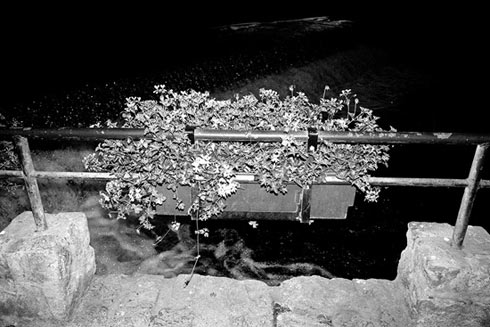
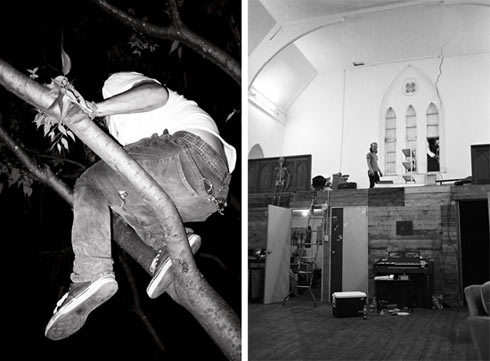
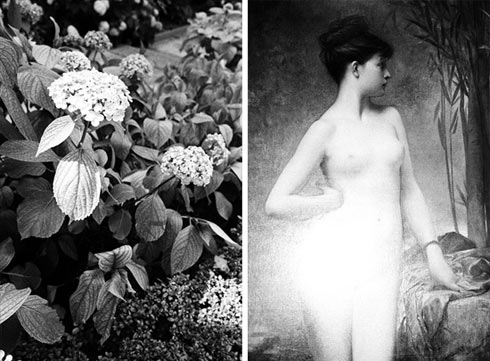
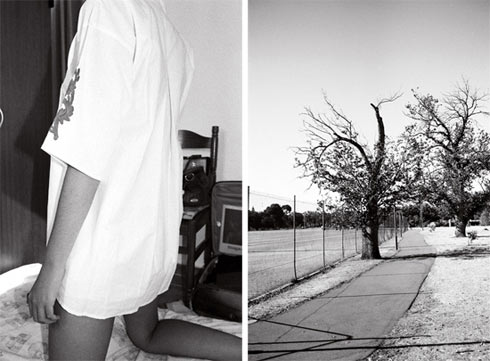
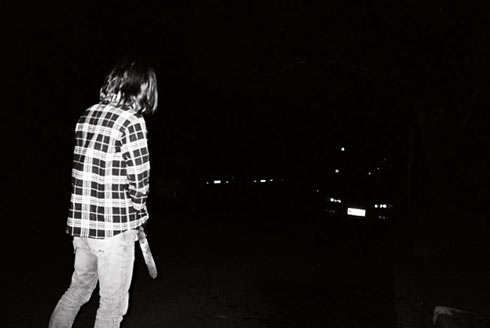
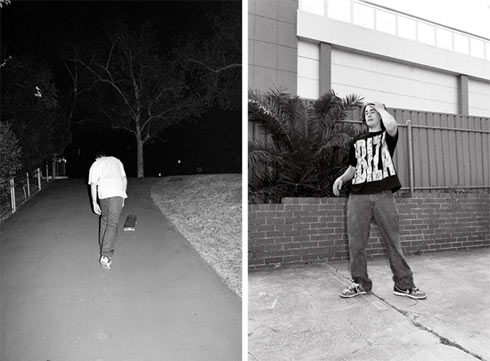
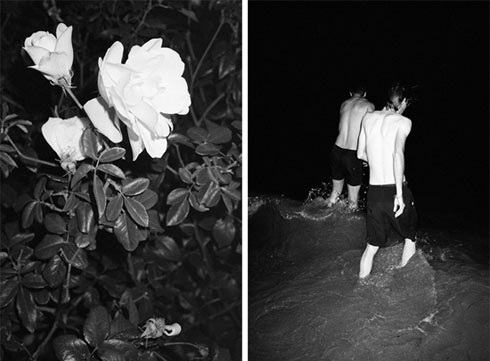
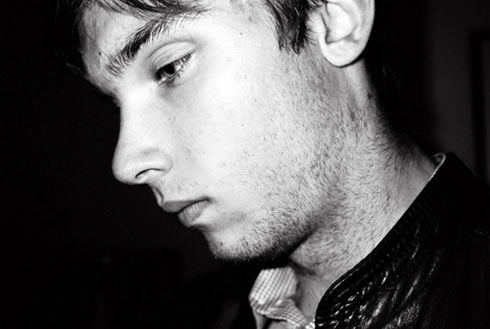 Words: Max Olijnyk Images: Andrew Long
Words: Max Olijnyk Images: Andrew Long
Maybe it’s the hills. Or, it could be the tight-knit, inclusive scene of artists, musicians, skaters and eccentrics. Maybe it’s the weird tasting water. Whatever it is, Adelaide seems to breed an inordinate amount of creative talent, none more so than 22 year-old Andrew Long. Andrew’s starkly lit, tightly framed black and white photographs have an eerie, timeless quality, evoking thoughts of heartbroken introspection and restorative nights on the town. Self-motivated and dedicated, Andrew has exhibited his work in a number of highly thought of shows and publications, as well as a series of self-published books and zines. Graceful Exits, Andrew’s third solo show is his best yet.
Max Olijnyk: So Andrew, you have a new show, a new job and a new house. Is this Graceful Exits collection of work a way of closing a chapter of your life and opening a new one?
Andrew Long: Yeah. That’s part of why I settled on that title, I like to think that an exit is an entrance to something else. There’s sadness but excitement.
MO: Tell us about where you’re living now.
AL: I moved into an old church just outside the city about a month ago, where three of my friends were already living. It’s really pretty special. There’s lots of room and everyone is pretty tight so it makes for a good party house. It’s got a great musical history, as in bands that have performed, practised or recorded here or the people that have lived here since its inception years ago. It’s going to be a good summer!
MO: You come off as quite a serious young man. But to those of us who know you well, you have an extremely mischievous side that is never far from the surface. I keep this in mind when I look at your photos, which are quite serious from the outset. Is this the intention?
AL: I guess I take all the photos seriously, but they all hold a different value to me. The photos are all really personal though, which might be why I would come across as serious.
MO: Does the way you see your images change? I’m wondering if fresh meaning appears when you see them alongside other images, or perhaps something you didn’t notice might pop out at you once it’s developed?
AL: Yes, a lot of the time. This is a really exciting thing about photography, putting things into context and understanding them long after the moment has passed. It works on a larger scale as well, like now that this exhibition is all done, I understand it and myself a bit more. There’s some quote about the photographer that shoots what he wants to understand which is true with me to an extent, I think.
MO: When I moved from Adelaide to Melbourne, there was definitely an adjustment period from being one of the only skaters who took photos and listened to sad white guy music, to one of many, a drop in the ocean in fact. Do you feel isolated creatively in Adelaide?
AL: I do in a way. A lot of my friends are musicians, so it’s a really different creative process – as in they have their set band practice every week and the rest of the time they can do whatever they want and still feel satisfied creatively. It can be hard to stay motivated, as I find I’m rarely bouncing ideas off of people. But that might just be me. I was definitely overwhelmed the first time I went to visit you when you moved, with everything that was happening, it was really encouraging.
MO: Does that ever make you feel like moving? Because I know you have a great group of friends there, and everything seems to be working out well. But there’s always the lure of the bigger cities.
AL: Of course. I have been tempted a couple of times to move to Melbourne in particular but for some reason or another not gone through with it. Adelaide, especially if you have good friends, can be a really comfortable place to be. It can be a dilemma though because I’m at an age where I feel like I want to throw myself into a new city and out of the comfort zone to see what would happen. I will move, but I’m not sure how soon.
MO: There are several themes running through your work – in this collection, and your body of work as a whole. The beautiful young men, the flora, the close-up blurred portraits, the hi-jinx… Are these things you return to consciously, like every time you notice it happening, or is it coincidence?
AL: I do consciously stick to themes. It also has a lot to do with the editing process as well as what I choose to take a picture of. By coming back to things similar to what I’ve done before, I guess I’m just wanting to improve on old work. The blurred portraits are a new thing that I just started doing this year, which I think fits in well – although aesthetically it’s completely different.
MO: It’s interesting that you say you’re trying to improve, rather than add to a collection. Do you feel your work has improved over the past few years? Personally, I can see a huge progression.
AL: I think so. When I say improvement I mean I think I’m getting better at saying what I want to say, although I guess that can also change with what is happening in my life. Looking back on The Mizpah it seems a lot more relaxed than what I’ve just done. It’s a good time capsule for me, which is what all this is I suppose.
MO: As well as your photographic prints, there is a video component to Graceful Exits. This is a new thing for you, isn’t it? How did it come about, and how does it fit in with the rest of the work?
AL: Yes, I literally finished it last night after it being just a ‘what if’ for months… It’s very new, I’ve never made a video before and it’s a really rewarding feeling. My friend Bryan Mason, who made the best Adelaide skate videos, helped me with the post-production, which was great. He knew exactly what I was trying to do. It’s technically the same as the blurred portraits, but a video, a close-up moving portrait of my friend Stuart that loops after about 7 minutes. It’s an expansion of this idea that I had, to really zone in on the eyes and do a piece that was the complete opposite of what my other photographs look like. I wanted it to be this document of someone young really just living – breathing, blinking and everything. I got some really great expressions throughout the video, which was just one shot. It will be a projection in the front window of the exhibition space.
MO: Your new zine Ignorance is Piss is perhaps your best yet. Is it specifically to accompany the show? Is it available to buy? How about your previous zines and books? That interiors one was great, too.
AL: Thanks Max. Yes it is a supplement to the show. This time round, I wanted to separate the pictures that I think worked as individual pieces for an exhibition and the other photos that I wanted to work as a kind of narrative, like in my previous work. The new zine will be available online through OWN Books in Melbourne. My old ones are still available through me – some shops that I sent them to may still have a few, but I’ve since lost track.
MO: Why is it not many photographers talk about their equipment, or the technical aspect of their art? Does it detract from the mystery? Are you willing to break the mould here? What do you use, man?
AL: This is true isn’t it? Well, currently – and only for this most recent show – I’ve been using Contax equipment, switching back and forth between a rangefinder and a point and shoot. For a long time I’ve also used Mamiya 645’s, which I will still use for less candid photos. The pictures from my first book Flannelette Shirts & Flash-Lit Hair were predominantly shot on disposable cameras, so I’ve sort of been working up to nicer equipment since then. As irrelevant as it can be, it’s always interesting what a different camera can bring to your photos.
MO: Devet Decet is your web based project you’ve been doing for a few years now. I know it has changed shape a few times. What’s the current incarnation? And you got a tattoo of the logo!
AL: Currently, it’s a place where my zines are available to buy, and I’ve put some photographs on there from friends like you and Tom (Jeppe). It has changed a few times, I never really decided what I wanted it to be I guess. I just recently got the old logo for it on my arm, this pointy dotted love heart I drew years ago.
MO: Any plans to take Graceful Exits to other places than Adelaide?
AL: I would really like to do that next year, although there aren’t any plans yet.
MO: Tell us about the space you are using to exhibit Graceful Exits.
AL: It’s an antique store that my friend John Taylor owns, that I used to work in when I was younger – just doing odd jobs and photographing the stock. It’s an amazing building and John has just recently repainted the floors and walls making it look really nice as a gallery setting. I remember when I was working there I saved my pay up to buy my first Mamiya on eBay, so putting on an exhibition there is pretty cool – like I’ve come full circle or something.
MO: Some of your work deals with skateboarding, though it feels almost incidental, as if you are observing it from a distance. Your skate photos now look like they are taken by someone who doesn’t necessarily skate, in the way they are framed and timed. But you used to shoot ‘proper’ skate photos for magazines, multiple flashes etc. What happened there? Do you view skateboarding differently now? What do you think of skate photography?
AL: Well I think anyone that does skate photography knows that it can be quite exhausting. There’s a huge amount of commitment involved and I really respect the people that make a living out of it, and are really good at it. Skateboarding is a huge part of my life. It’s the reason I met so many of my best friends, and the reason I started taking photos. After shooting skate-photos as a really strict formula for a couple of years, I found it more enjoyable just to shoot on a more personal level, my friends the skaters as people. It’s fun now to mess around with, like crop it right down to just the skater and board during the trick or I guess using that photo of the slam at the bottom of the stairs.
MO: Do you take as many photos these days as you have always done?
AL: It goes through waves. At the moment, I haven’t really been shooting much at all, which might have to do with the whole finishing process of this show. Once it’s all done I’ll be able to relax and feel ready to start again. I used to put myself on a one roll per-week minimum. It’s interesting though, I read in a Wolfgang Tilmanns interview that he actually doesn’t shoot a lot at all, but then there’s people like Nobuyoshi Araki that has shot every day of his life for so many years – both such amazing photographers. I’m definitely of the opinion that I don’t shoot enough though.
MO: Over the past few years, you’ve done quite a bit of travel. Would I be right in saying Japan is one of your favourite places? Any plans to spend a more extended period of time over there or anywhere else?
AL: I love to travel – it’s what I’ve always wanted to do since I was a kid. Japan is definitely one of my favourites, I’m going back for September. I’d like to go overseas for an extended period but I am committed to my job at the moment and I’d like to achieve a few things interstate before leaving indefinitely. Some of the photos in Graceful Exits were taken in Europe. I like the juxtaposition of photos from somewhere far away and amazing to me, with photos in Australian suburbia. You wouldn’t really know I guess but that’s what the plant photos are in the exhibition. A flower in Lyon, France set aside a flower in Magill, South Australia.
MO: Your work has a sort of dramatic feel to it. It’s like you are saying, look at these people, look at these plants, look at all these things, they are the most important things in the world and deserve to be thought of as such. Though thinking about it, that is essentially what anyone who takes a photograph is saying, it’s just that your work communicates it effectively. Is that how you see it?
AL: It’s a bit cliché but I really enjoy the feeling of photographing something that could be seen as boring, and giving it a new existence. In this show there’s a photo of a small tree out the back of my Dad’s house in Brisbane. It’s next to the BBQ and really quite sad looking – something you wouldn’t look twice at. When I first got it back I wondered whether I went a bit far on the flash. It’s really burnt into the negative, overexposed. But now it’s one of my favourites because of that. Its like, I don’t really give a shit if this is a ‘correct’ photo of this tree, I’ve centered it and flooded it with really harsh light. There’s no fancy technique or anything trying to make this look attractive, I may even be making it look unattractive to some. It’s a really technically basic photograph. I guess it’s just about seeing the beauty in what you have rather than looking for something better all the time, which is something I often have to remind myself of.
Graceful Exits is showing from August 25 to September 12 at A.Avignon in Hackney, Adelaide.
For your chance to win a copy of Andrew Long’s Ignorance is Piss just email [email protected]
More from Andrew Long at Devet Decet
Next Article: Love Of Diagrams: Forever Is A Long Time



